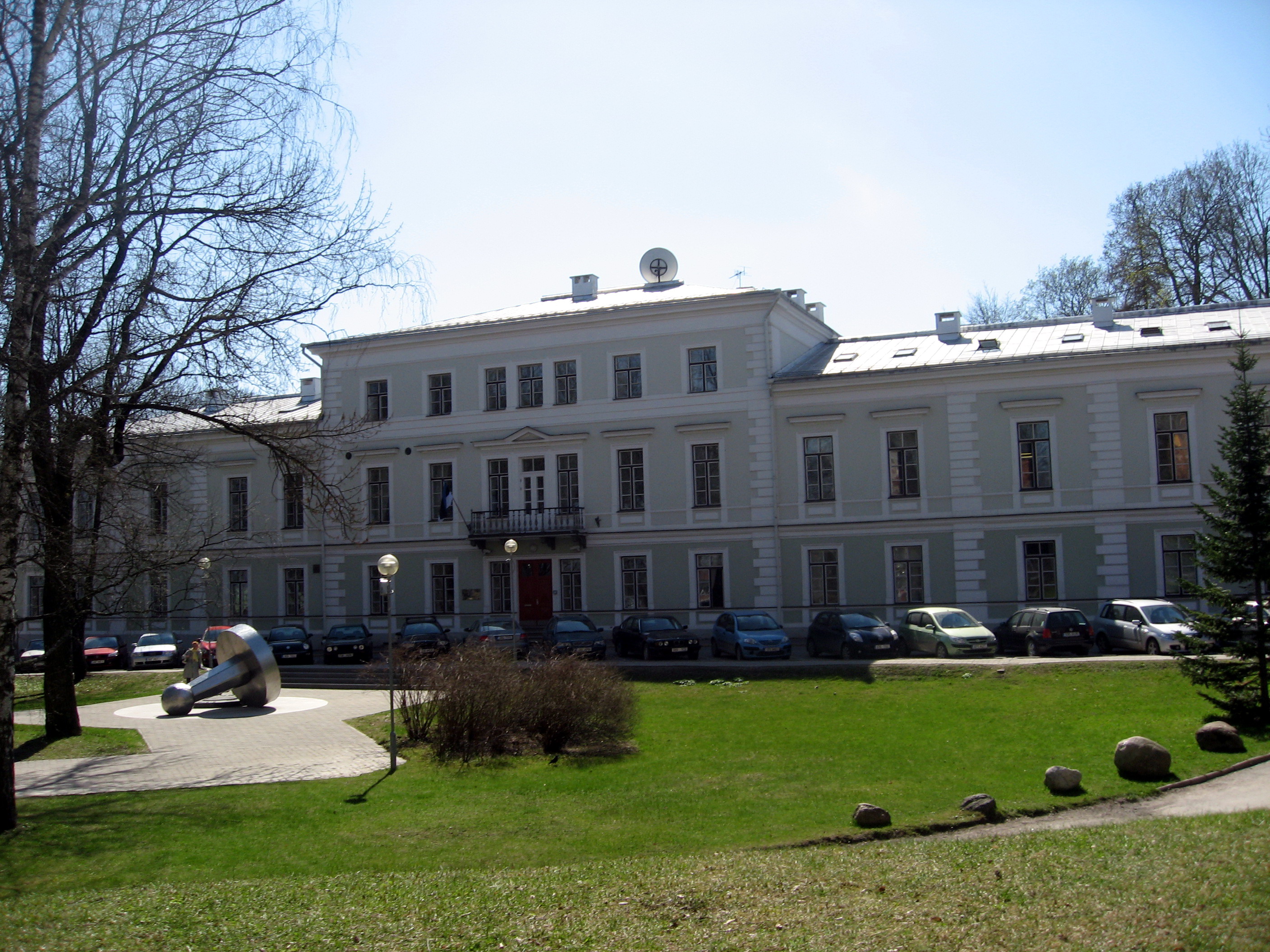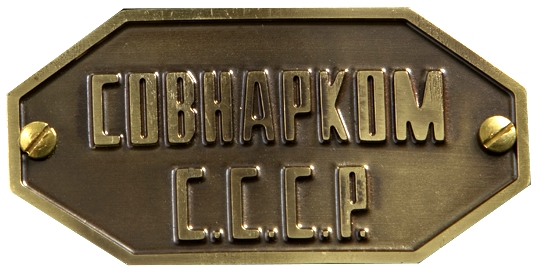|
Aino-Eevi Lukas
Aino-Eevi Lukas (29 July 1930 – 5 December 2019) was an Estonian equestrian, lawyer and politician. She competed for the national team in her youth in horse jumping and was the national champion in the obstacle course in 1947 and 1949. Earning a degree in law in 1968, she was recognized as the Estonian Lawyer of the Year in 2003. Post independence, she became the first chair of the Tartu City Council and in 2006, was knighted and the Tartu Medal was bestowed upon her. Early life and sport Aino-Eevi Lukas was born 29 July 1930 in Tallinn, Republic of Estonia to Martha-Katarina (née Mõttus) and Jaan Lukas. Her father was a career military officer who had taken part in the Estonian War of Independence and would later become a Major General and the Chief of Staff of the Estonian rifle corps. She attended Tallinn Secondary School No. 7, completing her education in 1948. During her schooling, in 1945, Lukas began riding horses, training under Evald Nõmme and Martin Sootsi. Sh ... [...More Info...] [...Related Items...] OR: [Wikipedia] [Google] [Baidu] |
Tallinn
Tallinn () is the most populous and capital city of Estonia. Situated on a bay in north Estonia, on the shore of the Gulf of Finland of the Baltic Sea, Tallinn has a population of 437,811 (as of 2022) and administratively lies in the Harju ''maakond'' (county). Tallinn is the main financial, industrial, and cultural centre of Estonia. It is located northwest of the country's second largest city Tartu, however only south of Helsinki, Finland, also west of Saint Petersburg, Russia, north of Riga, Latvia, and east of Stockholm, Sweden. From the 13th century until the first half of the 20th century, Tallinn was known in most of the world by variants of its other historical name Reval. Tallinn received Lübeck city rights in 1248,, however the earliest evidence of human population in the area dates back nearly 5,000 years. The medieval indigenous population of what is now Tallinn and northern Estonia was one of the last " pagan" civilisations in Europe to adopt Christianit ... [...More Info...] [...Related Items...] OR: [Wikipedia] [Google] [Baidu] |
Siberia
Siberia ( ; rus, Сибирь, r=Sibir', p=sʲɪˈbʲirʲ, a=Ru-Сибирь.ogg) is an extensive geographical region, constituting all of North Asia, from the Ural Mountains in the west to the Pacific Ocean in the east. It has been a part of Russia since the latter half of the 16th century, after the Russians conquered lands east of the Ural Mountains. Siberia is vast and sparsely populated, covering an area of over , but home to merely one-fifth of Russia's population. Novosibirsk, Krasnoyarsk and Omsk are the largest cities in the region. Because Siberia is a geographic and historic region and not a political entity, there is no single precise definition of its territorial borders. Traditionally, Siberia extends eastwards from the Ural Mountains to the Pacific Ocean, and includes most of the drainage basin of the Arctic Ocean. The river Yenisey divides Siberia into two parts, Western and Eastern. Siberia stretches southwards from the Arctic Ocean to the hills of north-ce ... [...More Info...] [...Related Items...] OR: [Wikipedia] [Google] [Baidu] |
1930 Births
Year 193 ( CXCIII) was a common year starting on Monday (link will display the full calendar) of the Julian calendar. At the time, it was known as the Year of the Consulship of Sosius and Ericius (or, less frequently, year 946 '' Ab urbe condita''). The denomination 193 for this year has been used since the early medieval period, when the Anno Domini calendar era became the prevalent method in Europe for naming years. Events By place Roman Empire * January 1 – Year of the Five Emperors: The Roman Senate chooses Publius Helvius Pertinax, against his will, to succeed the late Commodus as Emperor. Pertinax is forced to reorganize the handling of finances, which were wrecked under Commodus, to reestablish discipline in the Roman army, and to suspend the food programs established by Trajan, provoking the ire of the Praetorian Guard. * March 28 – Pertinax is assassinated by members of the Praetorian Guard, who storm the imperial palace. The Empire is auctioned o ... [...More Info...] [...Related Items...] OR: [Wikipedia] [Google] [Baidu] |
Tallinn University Of Technology
Established in 1918, Tallinn University of Technology (TalTech; et, Tallinna Tehnikaülikool) is the only technical university in Estonia. TalTech, in the capital city of Tallinn, is a university for engineering, business, public administration and maritime affairs. TalTech has colleges in Tartu and Kohtla-Järve. Despite the similar names, Tallinn University and Tallinn University of Technology are separate institutions. History In the early twentieth century, Estonia recognised an urgent need for locally trained engineering specialists. Until then, young people from Estonia had received their specialist education in St. Petersburg, Germany or Riga. Opportunities had to be sought for engineering-minded people to acquire an Estonian-based education which was adapted to local conditions and needs; Estonia was in the process of establishing itself as an independent country. On 17 September 1918, the Estonian Engineering Society opened an Estonian-based engineering school nam ... [...More Info...] [...Related Items...] OR: [Wikipedia] [Google] [Baidu] |
Õhtuleht
''Õhtuleht'' (''Evening Paper'') is the largest daily newspaper in Estonia. It is a tabloid newspaper. The newspaper is published in Tallinn in the Estonian language. History and profile ''Õhtuleht'' was established in 1944. On 3 July 2000 two rival tabloid papers in Estonia, ''Õhtuleht'' and ''Sõnumileht'' (''The Messenger''), merged, becoming ''SL Õhtuleht''. Since 6 October 2008 the name was shortened back to ''Õhtuleht''. The paper has a liberal-conservative political stance. It is owned by Eesti Meedia which also owns ''Postimees'' and which in turn is owned by Schibsted, a Norwegian media group, and by Ekspress Grupp Ekspress Grupp is an Estonia Estonia, formally the Republic of Estonia, is a country by the Baltic Sea in Northern Europe. It is bordered to the north by the Gulf of Finland across from Finland, to the west by the sea across from Swe .... ''Õhtuleht'' is available online at Ohtuleht.ee. Initially, at first the online version was just a ... [...More Info...] [...Related Items...] OR: [Wikipedia] [Google] [Baidu] |
Postimees
''Postimees'' () is an Estonian daily newspaper established on 5 June 1857, by Johann Voldemar Jannsen. In 1891, it became the first daily newspaper in Estonia. Its current editor-in-chief is Priit Hõbemägi. The paper has approximately 250 employees. ''Postimees'' is currently published six days a week and has the largest circulation and readership in Estonia with 55,000 copies sold during the workweek and over 72,000 on weekends. Ninety-seven percent of the paper's circulation is subscription-based with only three percent sold individually. The weekend edition of ''Postimees'', published on Saturdays, includes several separate sections: ''AK'' (), ''Arter'', and a television-guide. The paper is owned by namesake media company Postimees Group (formerly known as Eesti Meedia), which a company owned by entrepreneur Margus Linnamäe has a full control since 2015. History ''Postimees'' is considered to be the oldest newspaper in Estonia. ''Perno Postimees ehk Näddalaleht'' ... [...More Info...] [...Related Items...] OR: [Wikipedia] [Google] [Baidu] |
European Court Of Justice
The European Court of Justice (ECJ, french: Cour de Justice européenne), formally just the Court of Justice, is the supreme court of the European Union in matters of European Union law. As a part of the Court of Justice of the European Union, it is tasked with interpreting EU law and ensuring its uniform application across all EU member states under Article 263 of the Treaty of the Functioning of the European Union (TFEU). The Court was established in 1952, and is based in Luxembourg. It is composed of one judge per member state – currently – although it normally hears cases in panels of three, five or fifteen judges. The Court has been led by president Koen Lenaerts since 2015. The ECJ is the highest court of the European Union in matters of Union law, but not national law. It is not possible to appeal against the decisions of national courts in the ECJ, but rather national courts refer questions of EU law to the ECJ. However, it is ultimately for the national court ... [...More Info...] [...Related Items...] OR: [Wikipedia] [Google] [Baidu] |
Uno Lõhmus
Uno Lõhmus (born 30 October 1952) is an Estonian judge. From 1998 to 2004, he was the Chief Justice of the Supreme Court of Estonia. He was born in Mõisaküla. In 2005 he was awarded with Order of the White Star The Order of the White Star ( et, Valgetähe teenetemärk; french: Ordre de l'Etoile Blanche) was instituted in 1936. The Order of the White Star is bestowed on Estonia Estonia, formally the Republic of Estonia, is a country by the Baltic ..., II class. References Living people 1952 births 20th-century Estonian judges People from Viljandi County 21st-century Estonian judges {{Estonia-bio-stub ... [...More Info...] [...Related Items...] OR: [Wikipedia] [Google] [Baidu] |
Ago Pajur
Ago Pajur (born 24 March 1962 in Türi) is an Estonian historian. His principal fields of interest are the political history of Estonia in the first half of the 20th century, and the military history of Estonia in the 20th century. In 1999, he defended his doctoral thesis at the University of Tartu. Since 1991, he is teaching history of Estonia at Tartu University. In 2020, he was awarded with Order of the White Star The Order of the White Star ( et, Valgetähe teenetemärk; french: Ordre de l'Etoile Blanche) was instituted in 1936. The Order of the White Star is bestowed on Estonia Estonia, formally the Republic of Estonia, is a country by the Baltic ..., V class. References Living people 1962 births 20th-century Estonian historians University of Tartu alumni University of Tartu faculty Recipients of the Order of the White Star, 5th Class People from Türi 21st-century Estonian historians {{Estonia-bio-stub ... [...More Info...] [...Related Items...] OR: [Wikipedia] [Google] [Baidu] |
Supreme Court Of Estonia
The Supreme Court of Estonia ( et, Riigikohus) is the court of last resort in Estonia. It is both a court of cassation and a constitutional court. The courthouse is in Tartu. History During the first independence period (1919-1940) With the First Constitution of Estonia and the Supreme Court Act, the Estonian Constituent Assembly established the Supreme Court of Estonia as a court of cassation on 21 October 1919. The first Justices of the Court were Kaarel Parts (Chief Justice), Paul Beniko, Rein Koemets, Jaan Lõo, Hugo Reiman, Martin Taevere and Peeter Puusepp. The Court first sat in Tartu Town Hall on 14 January 1920. During the centralisation of power in 1935, the Supreme Court was transferred to Tallinn, operating from a specially remodelled building on Wismari Street. When the Court last sat on 31 December 1940, it accepted an order by the government of the Estonian SSR to disband itself as of 1 January 1941. Soviet occupation (1940-1991) The Supreme Court of the Estoni ... [...More Info...] [...Related Items...] OR: [Wikipedia] [Google] [Baidu] |
Estonian Sovereignty Declaration
The Estonian Sovereignty Declaration ( et, suveräänsusdeklaratsioon), fully: Declaration on the Sovereignty of the Estonian SSR (), was issued on November 16, 1988 during the Singing Revolution in Soviet Estonia. The declaration asserted Estonia's sovereignty and the supremacy of the Estonian laws over the laws of the Soviet Union. Estonia's parliament also laid claim to the republic's natural resources: land, inland waters, forests, mineral deposits and to the means of industrial production, agriculture, construction, state banks, transportation, municipal services, etc. in the territory of Estonia's borders. November 16 is now celebrated annually as the "Day of Declaration of Sovereignty" (). Overview Estonia gained independence in the aftermath of World War I and Estonian War of Independence (1918–1920). In 1940 as a consequence of the German–Soviet Nonaggression Pact and its Secret Additional Protocol of August 1939 Estonia was occupied and annexed by the Soviet Unio ... [...More Info...] [...Related Items...] OR: [Wikipedia] [Google] [Baidu] |
Government Of The Soviet Union
The Government of the Soviet Union ( rus, Прави́тельство СССР, p=prɐˈvʲitʲɪlʲstvə ɛs ɛs ɛs ˈɛr, r=Pravítelstvo SSSR, lang=no), formally the All-Union Government of the Union of Soviet Socialist Republics, commonly abbreviated to Soviet Government, was the executive and administrative organ of state in the former Soviet Union. It had four different names throughout its existence; Council of People's Commissars (1923–1946), Council of Ministers (1946–1991), Cabinet of Ministers (January – August 1991) and Committee on the Operational Management of the National Economy (August–December 1991). It also was known as Workers-Peasants Government of the Soviet Union. The government was led by a chairman, most commonly referred to as " premier" by outside observers. The chairman was nominated by the Central Committee of the Communist Party of the Soviet Union (CPSU) and elected by delegates at the first plenary session of a newly elected Supreme Sovi ... [...More Info...] [...Related Items...] OR: [Wikipedia] [Google] [Baidu] |








